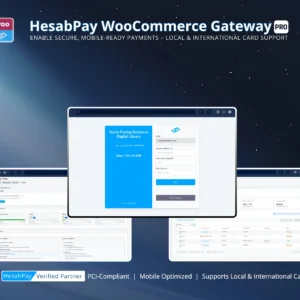Blog Focus: Understanding how data securely moves between your store, HesabPay, and financial systems.
1. The Secure Data Journey #
Every transaction follows a structured flow to ensure accuracy and protection:
-
Checkout Initiation: Customer submits payment data.
-
API Request: WooCommerce sends an encrypted request to HesabPay.
-
Processor Validation: HesabPay routes data securely to financial networks.
-
Webhook Response: Payment confirmation sent back to your site.
-
Order Update: WooCommerce reflects the final order status.
2. Security Layers in Each Step #
-
HTTPS encryption for all data exchanges.
-
Encrypted payloads for API and webhook communication.
-
Tokenized identifiers instead of raw payment data.
3. Logging and Traceability #
The plugin logs every data exchange securely:
-
Request timestamps
-
API response codes
-
Webhook validation signatures
These logs help identify issues or verify transaction authenticity.
4. Integration with External Systems #
For advanced users:
-
Sync order data with CRMs or ERPs using secure APIs.
-
Use webhook forwarding for analytics or reporting tools.
Enterprise Tip:
Limit access tokens and always encrypt API secrets stored externally.
5. Ensuring Data Flow Reliability #
-
Test Sandbox data flow before Live deployment.
-
Use monitoring alerts for failed webhook events.
-
Keep all data communication SSL-secured.
Conclusion:
A clear, secure data flow ensures transaction transparency and operational reliability — giving enterprise merchants full confidence in every payment processed through HesabPay.



